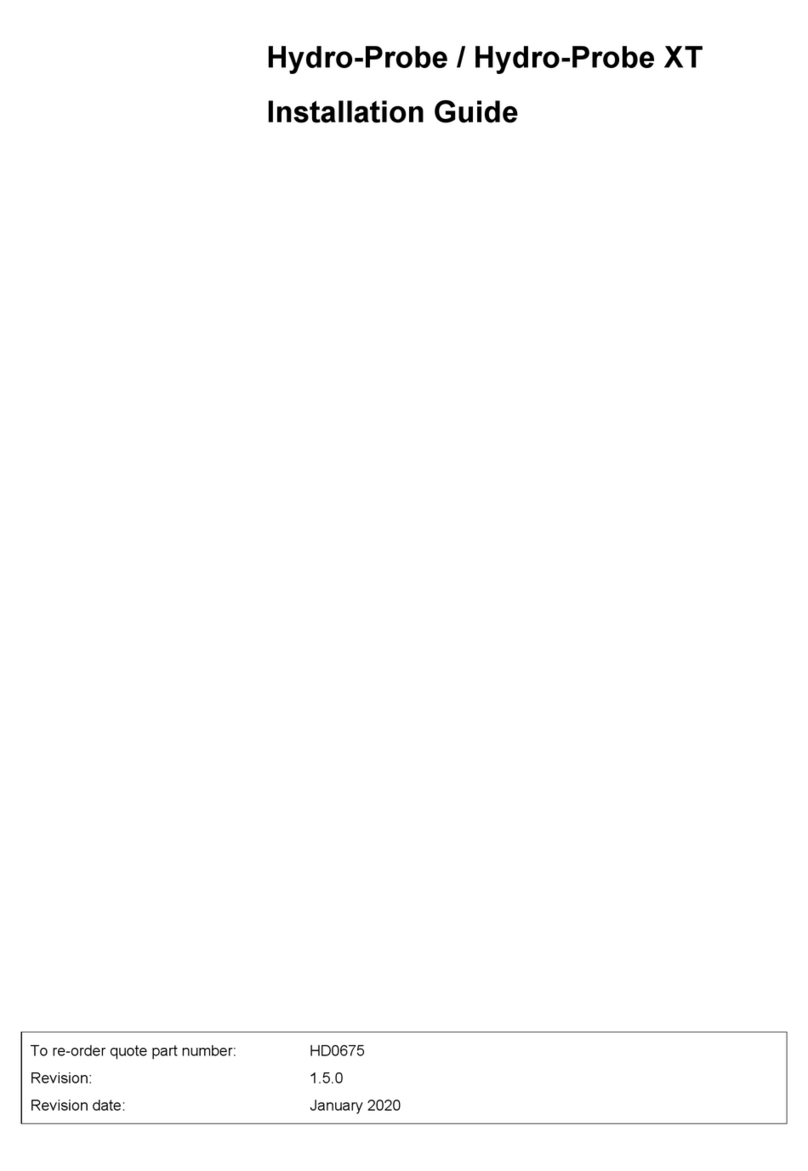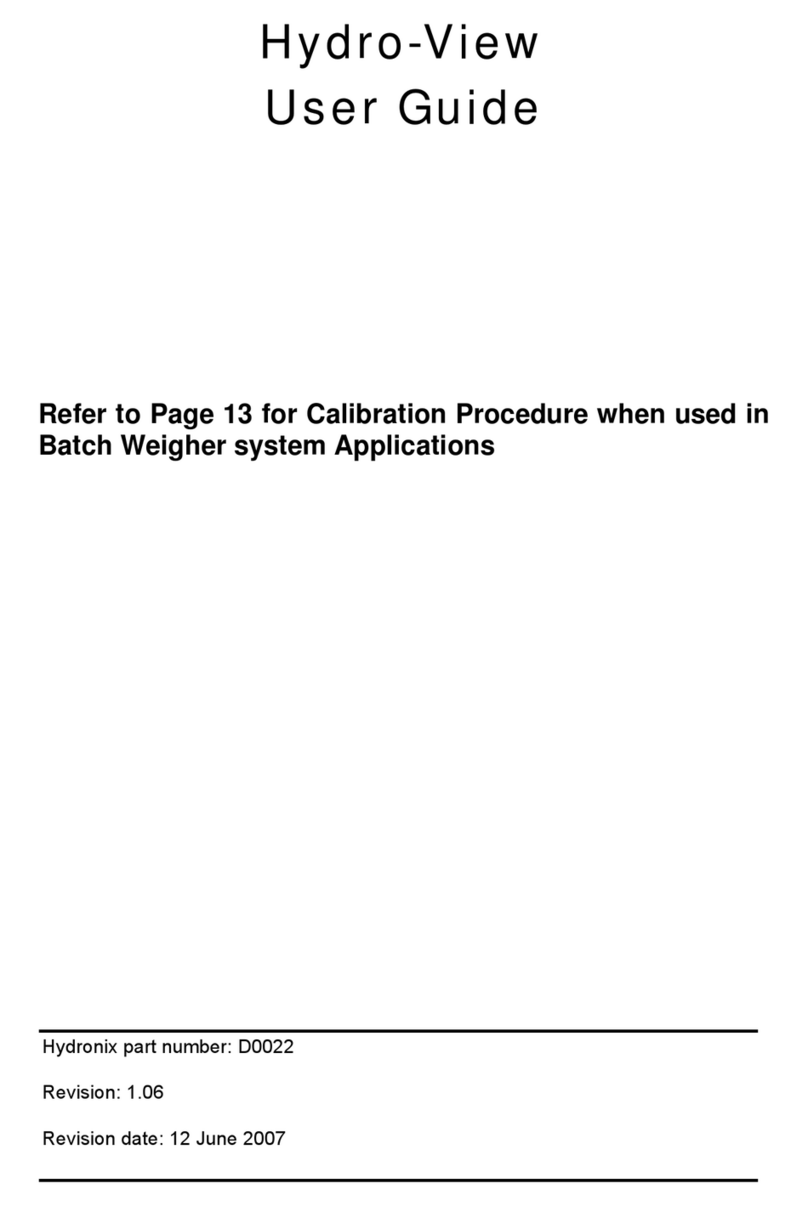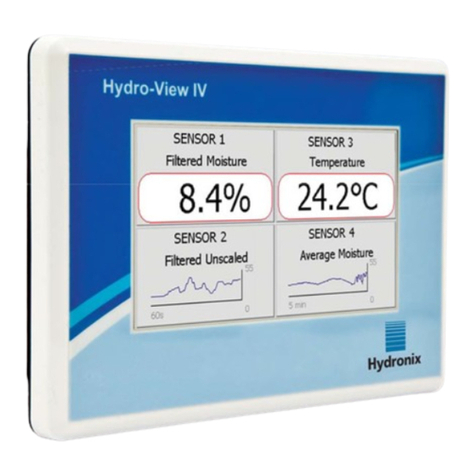
Hydro-Probe XT User Guide HD0538 Rev: 1.6.0 7
Table of Contents
Chapter 1 Introduction........................................................................................................................... 11
1Introduction................................................................................................................................. 12
2Measuring techniques ................................................................................................................ 12
3Sensor connection and configuration.........................................................................................13
Chapter 2 Mechanical Installation......................................................................................................... 15
1General to all applications .......................................................................................................... 15
2Positioning the sensor ................................................................................................................ 16
3Installing the Sensor................................................................................................................... 22
4Corrosion protection ................................................................................................................... 24
Chapter 3 Electrical Installation and Communication ........................................................................... 27
1Installation guidelines ................................................................................................................. 27
2Analogue outputs ....................................................................................................................... 27
3RS485 multi-drop connection.....................................................................................................29
4Hydronix Interface Units............................................................................................................. 30
5Digital input/output connection ................................................................................................... 30
6Connecting to a PC .................................................................................................................... 31
Chapter 4 Configuration ........................................................................................................................ 35
1Configuring the Sensor............................................................................................................... 35
2Analogue output setup ............................................................................................................... 35
3Digital inputs/output setup.......................................................................................................... 37
4Filtering....................................................................................................................................... 38
5Alternative Measurement Techniques........................................................................................ 39
Chapter 5 Sensor Integration and Calibration....................................................................................... 43
1Sensor Integration ...................................................................................................................... 43
2Sensor Calibration...................................................................................................................... 43
Chapter 6 Optimising Sensor and Process Performance ....................................................................51
1General to all Applications ......................................................................................................... 51
2Routine maintenance ................................................................................................................. 51
Chapter 7 Sensor diagnostics............................................................................................................... 53
1Sensor Diagnostics .................................................................................................................... 53
Chapter 8 Technical specification ......................................................................................................... 59
1Technical Specifications............................................................................................................. 59
Chapter 9 Frequently asked questions .................................................................................................61
Appendix A Default parameters ............................................................................................................ 63
1Default Parameters .................................................................................................................... 63
Appendix B Document Cross Reference .............................................................................................. 65
1Document Cross Reference....................................................................................................... 65






























